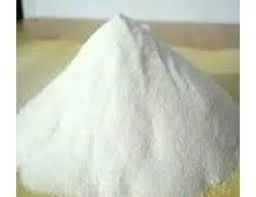
Sep . 29, 2024 03:21 Back to list
Understanding the Solubility Properties of Hydroxyethyl Cellulose in Various Solutions
Hydroxyethyl Cellulose An Overview of Solubility and Applications
Hydroxyethyl cellulose (HEC) is a non-ionic, water-soluble polymer derived from cellulose, the most abundant organic polymer on Earth. This white to off-white powder has gained popularity in various industries due to its unique physical and chemical properties, notably its solubility in water. Understanding the solubility of hydroxyethyl cellulose is crucial for its effective application in fields such as pharmaceuticals, cosmetics, food, and construction.
Structure and Solubility
HEC is manufactured through the etherification of cellulose using ethylene oxide under alkaline conditions. This process introduces hydroxyethyl groups into the cellulose backbone, enhancing its solubility in water. The degree of substitution (DS), which indicates the average number of hydroxyethyl groups per anhydroglucose unit, plays a pivotal role in determining the solubility of HEC. Generally, a higher DS correlates with improved solubility, enabling HEC to dissolve in a wider range of temperatures and pH levels.
At room temperature, HEC dissolves easily in cold water, forming a highly viscous solution. This solubility can be attributed to its hydrophilic nature, which allows it to interact favorably with water molecules. Nonetheless, the solubility of HEC can be affected by several factors, including molecular weight, concentration, temperature, and the presence of salts or other solutes in the solution.
Factors Affecting Solubility
1. Molecular Weight HEC comes in various grades, defined by their molecular weights—ranging from low to high. Higher molecular weight HECs exhibit thicker viscous solutions, while lower molecular weight variants dissolve more quickly but yield less viscous solutions.
2. Temperature Increasing the temperature typically enhances the solubility of HEC. As the temperature rises, water molecules gain energy, allowing them to interact more effectively with the polymer chains. This phenomenon is crucial in applications that require quick solubilization of HEC in processes such as paint formulation or adhesive application.
3. Concentration The concentration of HEC in a solution also plays a critical role. While low concentrations lead to dilute solutions, higher concentrations tend to result in more viscous preparations. Achieving the optimal concentration is vital, as excessive thickness can impede flow and usability in applications like coatings and gels.
hydroxyethyl cellulose solubility

4. Salts and Other Solutes The presence of salts can significantly influence HEC solubility. In many cases, salts can reduce the solubility of HEC by screening the electrostatic interactions among polymer chains. This effect is known as salting out and can be critical in formulations where control over viscosity and flow properties is desired.
Applications of Hydroxyethyl Cellulose
The unique solubility characteristics of HEC lend it to a wide range of applications
- Pharmaceuticals HEC is often used as a thickening agent as well as a binder and drug release modifier in tablets and gels. Its controlled viscosity properties enable the formulation of stable emulsions and suspensions.
- Cosmetics and Personal Care HEC serves as a stabilizer and thickener in lotions and creams, enhancing the texture and feel of products while improving the stability of emulsions.
- Food Industry In food applications, HEC is recognized as a food additive and thickening agent. It helps maintain the desired viscosity in sauces, dressings, and dairy products.
- Construction HEC is commonly used in construction materials such as dry-mix mortars, providing improved workability, adhesion, and water retention.
Conclusion
Hydroxyethyl cellulose stands out as a versatile polymer with significant importance across various sectors. Its solubility properties, influenced by molecular weight, temperature, concentration, and the presence of salts, make it an invaluable ingredient in formulations ranging from pharmaceuticals to personal care products. As industries continue to explore the potential of HEC, ongoing research into its solubility dynamics will undoubtedly unveil new applications and enhancements, further solidifying its role as a crucial component in modern formulations.
-
Versatile Hpmc Uses in Different Industries
NewsJun.19,2025
-
Redispersible Powder's Role in Enhancing Durability of Construction Products
NewsJun.19,2025
-
Hydroxyethyl Cellulose Applications Driving Green Industrial Processes
NewsJun.19,2025
-
Exploring Different Redispersible Polymer Powder
NewsJun.19,2025
-
Choosing the Right Mortar Bonding Agent
NewsJun.19,2025
-
Applications and Significance of China Hpmc in Modern Industries
NewsJun.19,2025







